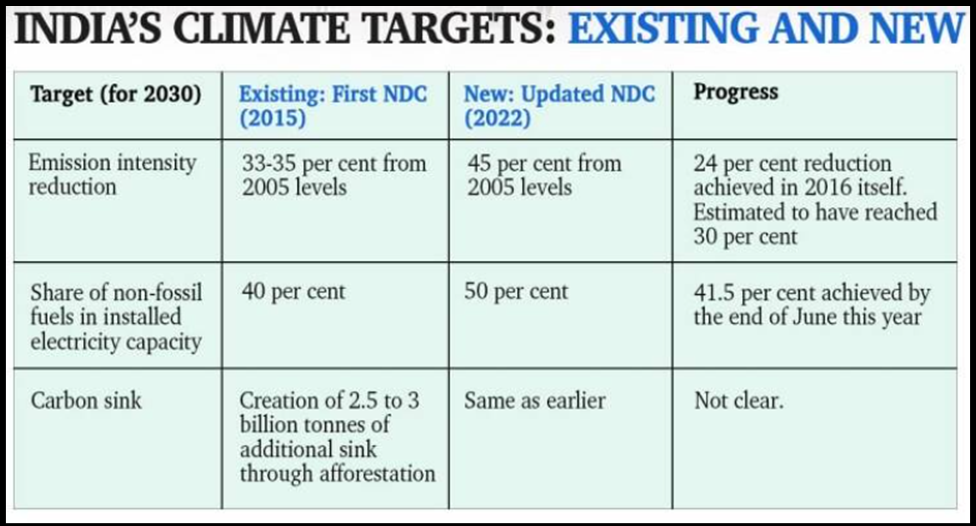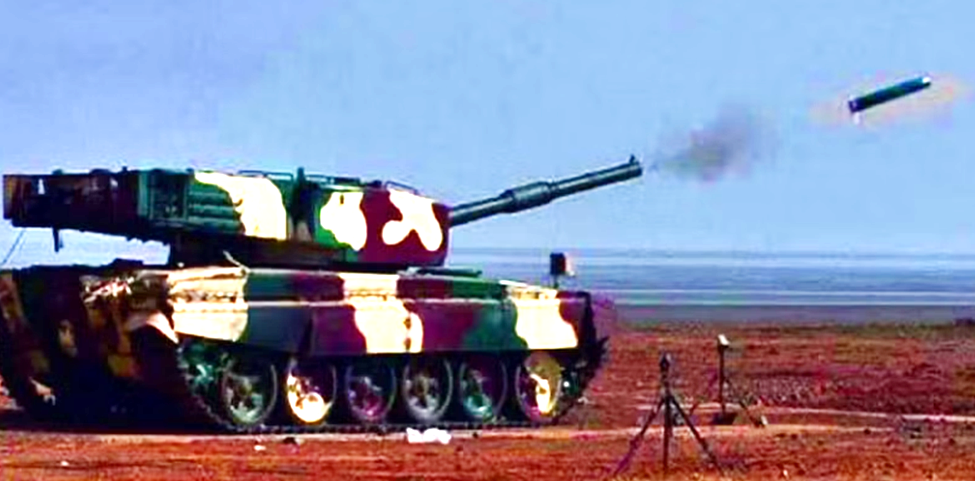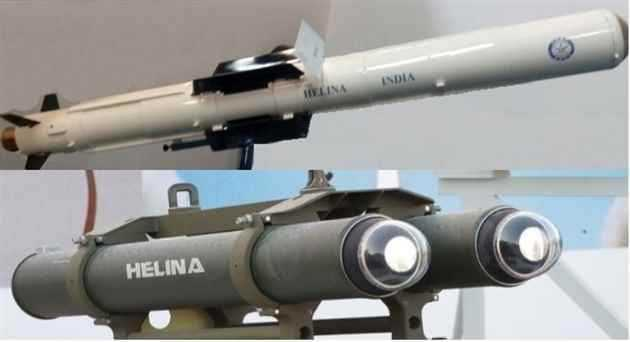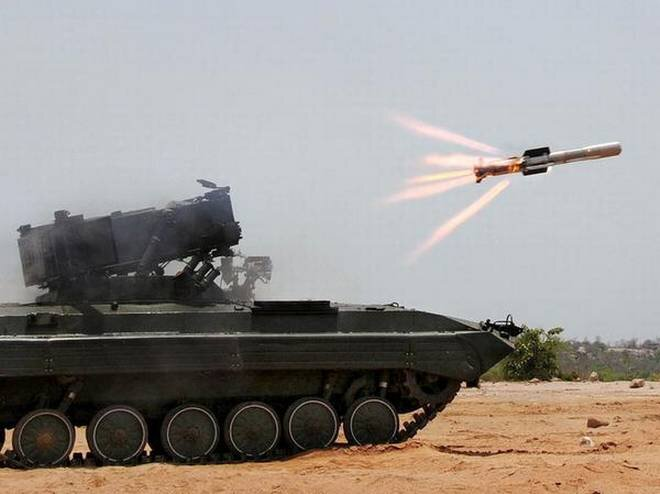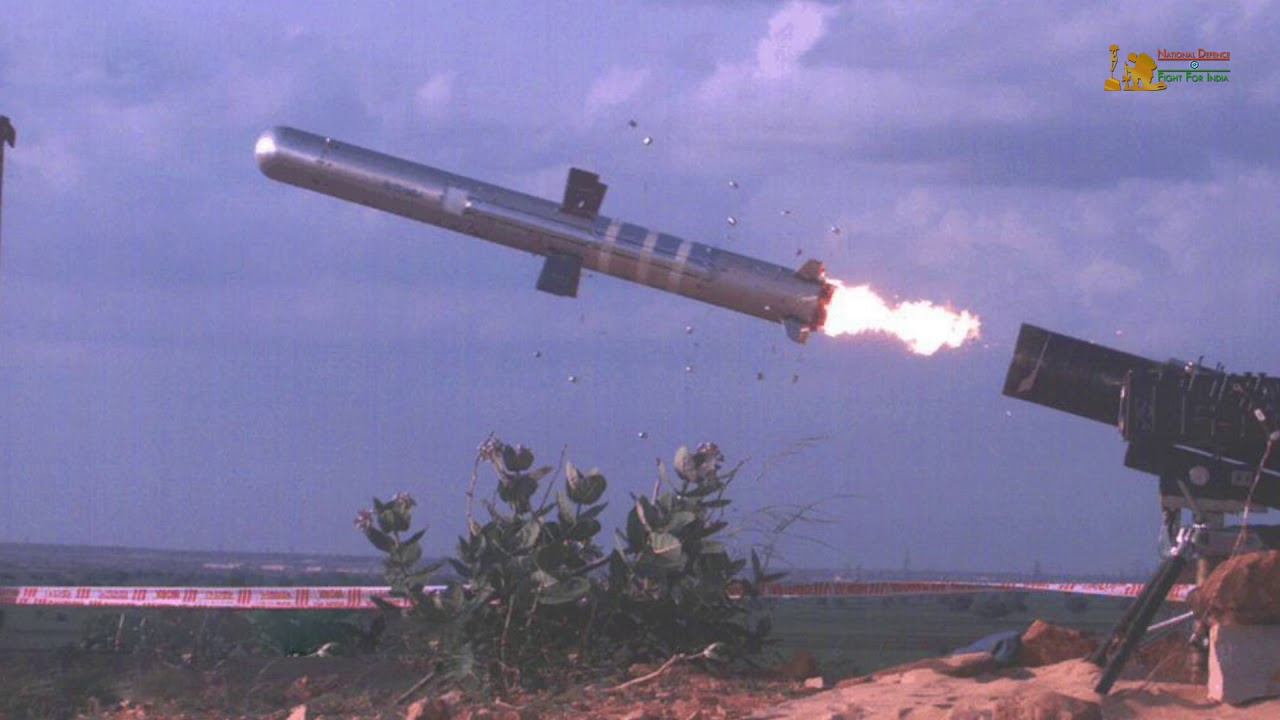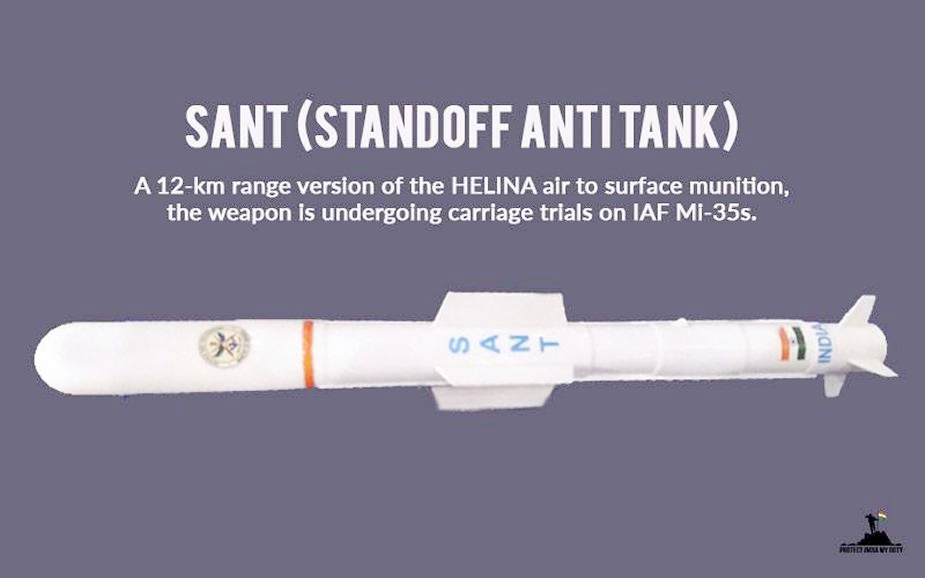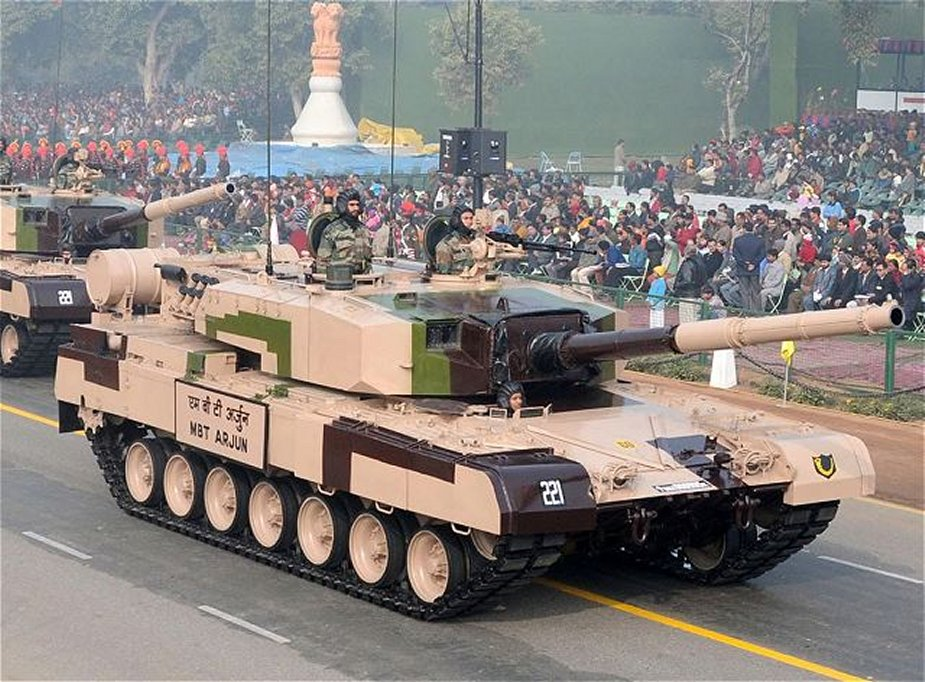Geography
Flood Situation in Kerala
For Prelims: Flood, Landslides, Chalakudy River, Madhav Gadgil Committee, National Disaster Management Authority (NDMA)
For Mains: Urban Flooding, Disaster Management in India
Why in News?
Kerala once again stares at a flood-like situation, similar to the one in 2018, with high intensity rain triggered by strong monsoon winds.
- In addition, a low-pressure system is expected to form within 2-3 days over the Bay of Bengal, which is likely to aggravate the rains.
What Happened in 2018 Kerala Floods?
- In August 2018 following a torrential rainfall, Kerala witnessed its worst floods since 1924.
- The dams were stored to the brim. Too much water was stored and consequently, the gates had to be opened.
- At least 35 of 50 large dams were opened for releasing water onto the already flooded areas downstream.
- With time, silt deposition had considerably reduced the holding capacity of the dams and the nearby rivers, leading to flooding of embankments and levees.
- Encroachment, which decreased the dam's built-in area (further reducing the capacity), sand mining and rampant felling of trees and clearing of forest in the Western Ghats also played a major factor in the Flood.
What do we know about Floods?
- It is an overflowing of water onto land that is normally dry. Floods can occur during heavy rains, when ocean waves come on shore, when snow melts quickly, or when dams or levees break.
- Damaging flooding may happen with only a few inches of water, or it may cover a house to the rooftop.
- Floods can occur within minutes or over a long period, and may last days, weeks, or longer. Floods are the most common and widespread of all weather-related natural disasters.
- Flash floods are the most dangerous kind of floods, because they combine the destructive power of a flood with incredible speed.
Why Frequent Floods in Urban Areas?
- Unplanned Development: Unplanned development, encroachments in riparian zones, failure of flood control structures, unplanned reservoir operations, poor drainage infrastructure, deforestation, land use change and sedimentation in riverbeds exacerbate floods.
- When rainfall is heavy, the river breaches the embankments and destroys habitations along the banks and on the sandbars.
- Unplanned Urbanisation: Flooding in the cities and the towns has become a frequent phenomenon.
- The reason for this is indiscriminate encroachment of waterways and wetlands, inadequate capacity of drains and lack of maintenance of the drainage infrastructure.
- Poor waste management also exacerbates the problem by blocking drains, canals and lakes.
- Neglecting Pre-Disaster Planning: History of flood management shows that focus of disaster management has largely been on post-flood recovery and relief.
- Many reservoirs and Hydro-electric plants do not have enough gauging stations for measurement of flood level, which is the principal component for flood prediction and forecast.
- No Heed to Gadgil Committee Recommendations: In 2011 the Madhav Gadgil committee recommended to declare roughly 1,30,000 sq. km area as environmentally sensitive zone (spanning Gujarat, Karnataka, Kerala, Maharashtra and Tamil Nadu).
- However, none of the six states agreed with its recommendations with Kerala particularly objecting to the proposed ban on mining, restrictions on construction activities and embargoes on hydroelectricity projects.
- The result of this negligence can now be clearly witnessed in terms of frequent floods and landslides.
Way Forward
- There’s certainly a case for greater coordination amongst forecasting agencies and reservoir management authorities to ensure the timely opening of dam spillways and create holding capacity in the reservoirs to absorb excess rainfall.
- A comprehensive flood management plan is also needed to ensure Disaster preparedness.
- All dimensions of urban growth, starting with affordable housing, play a central role in adapting to future climate change.
- Planned urbanisation can withstand disasters, the perfect example being Japan which faces earthquakes and even Tsunamis more often than others.
- Watershed management and emergency drainage plan should be clearly enunciated in policy and law.
- There is a need to consider natural boundaries such as watersheds instead of governance boundaries like electoral wards for shaping a drainage plan.
UPSC Civil Services Examination, Previous Year Questions (PYQs)
Mains
Q. Major cities of India are becoming vulnerable to flood conditions. Discuss. (2016)
Q. The frequency of urban floods due to high intensity rainfall is increasing over the years. Discussing the reasons for urban floods, highlight the mechanisms for preparedness to reduce the risk during such events. (2016)


Biodiversity & Environment
Stronger Climate Targets 2030
For Prelims: Climate Change, UNFCCC, COP, Paris Agreement, Nationally Determined Contributions, Renewable Energy, Government Initiatives
For Mains: UNFCCC COP, Climate Change & its implications, Measures to combat climate change, Government Initiatives
Why in News?
Recently, India has enhanced its climate change targets for 2030.
- In UNFCCC COP 26 at Glasgow in 2021, the Prime Minister of India had made a series of new promises to strengthen climate action from India.
What are India’s Revised Targets?
- About:
- Emission Intensity:
- India is now committing itself to at least 45% reduction in emissions intensity of GDP (emissions per unit of GDP) from 2005 levels.
- The existing target was a 33% - 35% reduction.
- India is now committing itself to at least 45% reduction in emissions intensity of GDP (emissions per unit of GDP) from 2005 levels.
- Electricity Generation:
- India is also promising to ensure that at least 50% of installed electricity generation capacity in 2030 would be based on non-fossil fuel-based sources.
- This is an increase from the existing 40% target.
- India is also promising to ensure that at least 50% of installed electricity generation capacity in 2030 would be based on non-fossil fuel-based sources.
- Emission Intensity:
- Significance:
- The updated Nationally Determined Contributions (NDCs) seek to enhance India’s contributions towards the achievement of the strengthening of global response to the threat of climate change, as agreed under the Paris Agreement.
- NDCs embody efforts by each country to reduce national emissions and adapt to the impacts of climate change.
- Such action will also help India usher in low emissions growth pathways.
- New NDCs will demonstrate India’s commitment at the highest level for decoupling of economic growth from greenhouse gas emissions.
- As a result of the revised NDCs, the Net Zero target by 2030 by Indian Railways alone will lead to a reduction of emissions by 60 million tonnes annually.
- The updated Nationally Determined Contributions (NDCs) seek to enhance India’s contributions towards the achievement of the strengthening of global response to the threat of climate change, as agreed under the Paris Agreement.
- Other NDCs:
- Increase non-fossil energy capacity to 500 GW (gigawatts) by 2030.
- Reduce the total projected carbon emissions by 1 billion tonnes (BT) by 2030.
- Achieve net zero carbon by 2070.
What are India’s Initiatives towards Climate Change?
- Reforms in Transport Sector:
- India is accelerating its e-mobility transition with the Faster Adoption and Manufacturing of (Hybrid &) Electric Vehicles Scheme.
- A voluntary vehicle scrapping policy to phase out old and unfit vehicles complements the existing schemes.
- India's Support to EVs:
- India is among a handful of countries that support the global EV30@30 campaign, which aims for at least 30% new vehicle sales to be electric by 2030.
- India’s advocacy of five elements for climate change “Panchamrit”, at the UNFCCC COP26 in Glasgow is a commitment to the same.
- Role of Government Schemes:
- The Pradhan Mantri Ujjwala Yojana has helped 88 million households to shift from coal-based cooking fuels to LPG connections.
- Role of Industries in Low-Carbon Transition:
- The public and private sectors in India are already playing a key role in meeting the climate challenge, helped by growing customer and investor awareness, as well as increasing regulatory and disclosure requirements.
- Hydrogen Energy Mission:
- Focus on generation of hydrogen from green power resources.
- Perform, Achieve and Trade (PAT):
- It is a market-based mechanism to further accelerate as well as incentivize energy efficiency in the large energy-intensive industries.
What are the Important Highlights of UNFCCC COP 26?
- About:
- The United Nations Framework Convention on Climate Change Conference of Parties 26 was held in Glasgow, UK in 2021.
- Minutes of the meeting:
- New Global and Country Targets:
- The Glasgow Summit has urged countries to consider strengthening their 2030 targets by COP27 to be held in Egypt in 2022.
- The summit targeted global warming not to exceed +1.5°C and got about 140 countries to announce target dates for bringing emissions down to net zero.
- The achievement is significant as in the Paris Agreement, the developing countries did not agree to reduce emissions but just the “emissions-intensity" of GDP.
- India has also joined the consensus and announced its net-zero target of 2070.
- Glasgow Breakthrough Agenda:
- A potentially important development which emerged out of COP26 (but outside the COP process) is the Glasgow Breakthrough Agenda endorsed by 42 countries (including India).
- This is a cooperative effort to accelerate the development and deployment of clean technologies and sustainable solutions in areas such as clean power, road transport, steel and hydrogen.
- A potentially important development which emerged out of COP26 (but outside the COP process) is the Glasgow Breakthrough Agenda endorsed by 42 countries (including India).
- Phasing-Down Coal Consumption:
- Coal is the dirtiest of fossil fuels and an early phasing out of coal is clearly desirable.
- European countries have pushed hard for its phase out; however, developing countries have resisted this.
- A middle path, as suggested by India, was referred to at the COP26 calling for a “phase-down" of coal-based power.
- Coal is the dirtiest of fossil fuels and an early phasing out of coal is clearly desirable.
- Best Case Scenario:
- An early assessment by Climate Action Tracker (CAT), an independent organisation, suggests that the targets declared, if fully achieved, could limit global warming to around +1.8°C.
- However, it also warns that the targets for 2030 are insufficiently ambitious. Unless significantly tightened, the world is more likely to end up seeing global temperatures rise by 2.1°C to 2.4°C.
- An early assessment by Climate Action Tracker (CAT), an independent organisation, suggests that the targets declared, if fully achieved, could limit global warming to around +1.8°C.
- New Global and Country Targets:
UPSC Civil Services Examination, Previous Year Questions (PYQs)
Prelims
Q. In the context of India’s preparation for Climate -Smart Agriculture, consider the following statements: (2021)
- The ‘Climate-Smart Village’ approach in India is a part of a project led by the Climate Change, Agriculture and Food Security (CCAFS), an international research programme.
- The project of CCAFS is carried out under Consultative Group on International Agricultural (CGIAR) headquartered in France.
- The International Crops Research Institute for the Semi-Arid Tropics (ICRISAT) in India is one of the CGIAR’s research centres.
Which of the statements given above are correct?
(a) 1 and 2 only
(b) 2 and 3 only
(c) 1 and 3 only
(d) 1, 2 and 3
Ans: (d)
Explanation:
- The Climate-Smart Village project in India is a CGIAR Research Program on Climate Change, Agriculture and Food Security (CCAFS). The CCAFS started piloting the Climate-Smart Village in 2012 in Africa (Burkina Faso, Ghana, Mali, Niger, Senegal, Kenya, Ethiopia, Tanzania, and Uganda) and South Asia (Bangladesh, India, and Nepal). Hence, statement 1 is correct.
- Climate Change, Agriculture and Food Security (CCFAS) is carried out under CGIAR (formerly the Consultative Group for International Agricultural Research). The Headquarters of CGIAR is in Montpellier, France. CGIAR is a global partnership that unites international organizations engaged in research about food security. Hence, statement 2 is correct.
- International Crops Research Institute for the Semi- Arid Tropics (ICRISAT) is a CGIAR Research Center. ICRISAT is a non-profit, non-political public international research organization that conducts agricultural research for development in Asia and sub-Saharan Africa with a wide array of partners throughout the world. Hence, statement 3 is correct.
- Therefore, option (d) is the correct answer.
Mains
Q. Explain the purpose of the Green Grid Initiative launched at World Leaders Summit of the COP26 UN Climate Change Conference in Glasgow in November, 2021. When was this idea first floated in the International Solar Alliance (ISA)? (2021)


International Relations
India-Mauritius Joint Trade Committee
For Prelims: Geography of Mauritius, Comprehensive Economic Cooperation and Partnership Agreement, India Mauritius Relations
For Mains: Significance of Mauritius as International Partner, Importance of CECPA, India Mauritius Relations
Why in News?
Recently, India hosted the 1st Session of “India-Mauritius High-Powered Joint Trade Committee” under the “India-Mauritius Comprehensive Economic Cooperation and Partnership Agreement (CECPA)”.
What are the Outcomes of the Session?
- Trade:
- Bilateral merchandise trade between India and Mauritius rose to USD 786.72 million in 2021-22 from USD 690.02 million in 2019-20.
- Both sides agreed to enhance bilateral collaboration to further increase bilateral trade and realize the true potential of the bilateral relationship especially under the CECPA.
- Bilateral merchandise trade between India and Mauritius rose to USD 786.72 million in 2021-22 from USD 690.02 million in 2019-20.
- CECPA:
- Inclusion of the General Economic Cooperation (GEC) Chapter and Automatic Trigger Safeguard Mechanism (ATSM) in CECPA.
- The GEC chapter will enable enhancement of export competitiveness and enlarging the existing scope for collaboration in the fields of Investments, Financial Services, Textile, Small and Medium Enterprises, Handicrafts, Gems and Jewellery etc.
- ATSM protects the country from any sudden or dramatic increase in imports.
- Under this mechanism, if the imports of a product are rising alarmingly, then after reaching a certain threshold, India can impose safeguard duties on imports from Mauritius automatically.
- The same provision applies to Mauritius as well against Indian imports.
- Inclusion of the General Economic Cooperation (GEC) Chapter and Automatic Trigger Safeguard Mechanism (ATSM) in CECPA.
- Skilled Professional:
- Interactions were held between both the sides in the Services sector with regard to establishing equivalence in certification, skills and licensing requirements of various professional bodies arrangement between the Ministry of Skill Development & Entrepreneurship and its counterpart in Mauritius on developing skill-sets.
- The Mauritian side, while conveying the shortage of professionals in Mauritius in various sectors such as Information and communication technologies (ICT), Financial Services, Film production, Engineering, Health etc., welcomed movement of high skilled professionals from India to Mauritius.
What is India - Mauritius CECPA?
- About:
- It is a kind of free trade pact that aims to provide an institutional mechanism to encourage and improve trade between the two countries.
- It is a limited agreement that will cover only select sectors.
- It will cover sectors such as Trade in Goods, Rules of Origin, Trade in Services, Technical Barriers to Trade (TBT), Sanitary and Phytosanitary (SPS) measures, Dispute Settlement, etc.
- Benefit to India:
- More than 300 domestic goods from agriculture, textiles, electronics and other sectors will get market access at concessional customs duties in Mauritius.
- Indian service providers will have access to around 115 sub-sectors from the 11 broad service sectors, such as professional services, computer related services, research & development, other business services, etc.
- Benefit to Mauritius:
- It will benefit from preferential market access into India for its 615 products, including frozen fish, speciality sugar, biscuits, fresh fruits, juices, mineral water, beer, alcoholic drinks, soaps, bags, medical and surgical equipment, and apparel.
- India has offered around 95 sub-sectors from the 11 broad services sectors, including professional services, R&D, other business services, telecommunication, environmental, health, etc.
How has India’s relations with Mauritius been?
- Economic:
- Social Housing Units:
- In May 2016, India had extended a grant of USD 353 million to Mauritius as Special Economic Package (SEP) to execute five priority projects identified by Mauritius, among others:
- Metro Express Project
- Supreme Court Building
- New ENT Hospital
- Supply of Digital Tablets to Primary School Children
- Social Housing Project.
- With the inauguration of the Social Housing Project, all the high-profile projects under the SEP have been implemented.
- In May 2016, India had extended a grant of USD 353 million to Mauritius as Special Economic Package (SEP) to execute five priority projects identified by Mauritius, among others:
- Construction of a State-of-the-Art Civil Service College:
- It is being financed through a grant support of USD 4.74 million, under an MoU signed in 2017 during the visit of Prime Minister of Mauritius to India.
- 8 MW Solar PV Farm:
- It involves the installation of 25,000 PV cells to generate approximately 14 GWh of green energy annually, to electrify approximately 10,000 Mauritian households.
- Foreign Direct Investment:
- Mauritius was the third top source (15.98%) of Foreign Direct Investment (FDI) into India in 2021-22.
- Social Housing Units:
- Recent Developments:
- India has signed a contract with Mauritius for the export of an Advanced Light Helicopter Mk III.
- The helicopter will be used by the Mauritius Police Force.
- India and Mauritius signed a USD 100 million Defence Line of Credit agreement.
- The two sides also discussed the Chagos Archipelago dispute, which was an issue of sovereignty and sustainable development before the United Nations (UN).
- In 2019, India voted at the UN General Assembly in support of the Mauritian position on the issue. India was one of the 116 countries that voted demanding that the UK end its “colonial administration” from the group of islands.
- India also delivered 1,00,000 Covishield vaccines to Mauritius.
- India has signed a contract with Mauritius for the export of an Advanced Light Helicopter Mk III.
Way Forward
- India’s approach to Mauritius is being increasingly entrenched within a regional framework, as seen with Mission Sagar, India’s initiative to deliver Covid-19 related assistance to countries in the Indian Ocean region.
- To take this engagement further, India needs to remain proactive in bringing together like-minded partners such as Mauritius, Comoros, Madagascar, Seychelles, Maldives, and Sri Lanka in numerous and overlapping ways.
- While India and Mauritius share cultural contiguity dating back to colonial times and a special partnership in recent years, India cannot take its influence in Mauritius for granted and should continue to enhance its engagement with this important island country.
- As India takes an integrated view of its security cooperation in the south western Indian Ocean, Mauritius is the natural node for it.
- Therefore, it is important to take course-corrections in India’s Neighbourhood First policy.


Important Facts For Prelims
Aatmanirbhar in Diammonium Phosphate (DAP)
Why in News?
As a part of the Union Government Aatma Nirbhar Bharat's initiative to promote self-sufficiency in Fertilizers, it is advising and supporting the Indian fertilizer companies to strengthen their backend supply chain.
What is the Status of Fertilizer Industry in India?
- Importance of Fertilizer:
- Agriculture, including its allied sector, is the largest source of income in India, the sector contributes 19.9% to the country’s GDP, with 54.6% of the population engrossed in agricultural activities.
- The agricultural sector largely depends on the fertilizer industry, which manufactures some of the most important raw materials required for the production of crops.
- In addition, the Indian fertilizer industry is of great importance because it produces phosphorus fertilizers such as Diammonium Phosphate (DAP), monoammonium phosphate (MAP), nitrogen, phosphorus, and potassium (NPKs), and single superphosphate (SSP) which aids in the development of healthy crops.
- Issue:
- The country largely depends on phosphate rock, a common and key raw material sourced mainly from Rajasthan and Madhya Pradesh. However, India imports 90% of its phosphate from other countries.
- Fertilizer Manufacturing in India:
- Indian Farmers Fertiliser Cooperative Limited (IFFCO), a multi-state cooperative society headquartered in the nation's capital, is the largest fertilizer manufacturer and marketer.
- National Fertilizers Limited, a state-owned corporation, is another of the largest producer of urea with a share of about 15% of total urea production in the country.
- Initiatives:
What is Diammonium Phosphate DAP?
- DAP is the second most commonly used fertiliser in India after urea.
- Farmers normally apply this fertiliser just before or at the beginning of sowing, as it is high in phosphorus (P) that stimulates root development.
- DAP (46% P, 18% Nitrogen) is the preferred source of Phosphorus for farmers. This is similar to urea, which is their preferred nitrogenous fertiliser containing 46% N.
What are the Initiatives taken to Resolve DAP Dependency?
- Encourage joint ventures abroad:
- India’s leading phosphatic fertilizer player formalized the acquisition of a 45% equity share in Baobab Mining and Chemicals Corporation (BMCC), a rock phosphate mining company based in Senegal.
- Further, the mining will be done in Senegal, and production of DAP will be done in India
- The government of India has been partnering with the industry to enable such investments to achieve supply security goals for meeting the country’s fertilizer needs.
- India’s leading phosphatic fertilizer player formalized the acquisition of a 45% equity share in Baobab Mining and Chemicals Corporation (BMCC), a rock phosphate mining company based in Senegal.
- Explore potential potassic ore resources Domestically:
- The Department of Mining and Geological Survey planned to expedite exploration of potential potassic ore resources in Rajasthan’s Satpura, Bharusari, and Lakhasar, and other states including Uttar Pradesh, Madhya Pradesh, Rajasthan, Gujarat, Andhra Pradesh, and Karnataka.
UPSC Civil Services Previous Year Question (PYQ)
Prelims
Q. With reference to chemical fertilizers in India, consider the following statements: (2020)
- At present, the retail price of chemical fertilizers is market-driven and not administered by the Government.
- Ammonia, which is an input of urea, is produced from natural gas.
- Sulphur, which is a raw material for phosphoric acid fertilizer, is a by-product of oil refineries.
Which of the statements given above is/are correct?
(a) 1 only
(b) 2 and 3 only
(c) 2 only
(d) 1, 2 and 3
Ans: (b)
Exp:
- The Government of India subsidizes fertilizers to ensure that fertilizers are easily available to farmers and the country remains self-sufficient in agriculture production. The same has been achieved largely by controlling the price of fertilizer and the amount of production. Hence, statement 1 is not correct.
- Ammonia (NH3 ) has been synthesized from natural gas. In this process, natural gas molecules are reduced to carbon and hydrogen. The hydrogen is then purified and reacted with nitrogen to produce ammonia. This synthetic ammonia is used as fertilizer, either directly as ammonia or indirectly after synthesis as urea, ammonium nitrate, and monoammonium or diammonium phosphates. Hence, statement 2 is correct.
- Sulfur is a major by-product of oil refining and gas processing. Most crude oil grades contain some sulfur, most of which must be removed during the refining process to meet strict sulfur content limits in refined products. This is done through hydrotreating and results in production of H2S gas, which is converted into elemental sulfur. Sulfur can also be mined from underground, naturally-occurring deposits, but this is more costly than sourcing from oil and gas and has largely been discontinued. Sulfuric acid is used in the production of both Monoammonium Phosphate (MAP) and Diammonium Phosphate (DAP). Hence, statement 3 is correct. Therefore, option (b) is the correct answer.


Indian Polity
Foreign Visit of the State Government Ministers
For Prelims: World Cities Summit, Cabinet Secretariat, Ministry of External Affairs (MEA), Ministry of Home Affairs, Ministry of Finance, Central Administrative Ministry, Prime Minister’s Office
For Mains: Centre-State Relations and Significance of Governor’s Role in state
Why in News?
Recently, Delhi’s Chief Minister was denied permission to attend the World Cities Summit in Singapore.
- Also, the state transport minister of Delhi filed a plea in Delhi high court to set aside the need for travel clearances by the Centre for private foreign visits of State government Ministers.
What's the Issue?
- The Chief Minister of Delhi was invited by the Singapore government to participate in the world cities conference but his clearance to visit was denied by the central government.
- Further, the central government said the trip to Singapore was "not advisable," noting that it was mostly attended by mayors and that, in any case, urban governance in Delhi was not solely the responsibility of the state government.
- Also, in 2019 the Delhi Chief Minister’s proposed visit to Copenhagen for attending the 7th C-40 World Mayors Summit was rejected by the MEA without providing any reason.
Under which Provisions are approvals Required?
- In 1982 the cabinet secretariat issued guidelines regarding foreign travel of Ministers of State government and Union Territories and State government officials.
- Foreign visits by members of the State governments in their official capacity would require clearances from the Ministry of External Affairs (MEA), Ministry of Home Affairs, Finance Ministry, and the Central Administrative Ministry.
- Further, another order circulated in 2004, modifying the provisions to the extent that the final orders were to be issued by the Finance Ministry.
- It stated that Chief Ministers required further approval from the Prime Minister’s Office before an official visit.
- Again in 2010, another directive was issued that made political clearances mandatory before private visits of Ministers in State governments.
On what Grounds has the Petition been Filed?
- Violates Right to Privacy:
- Requiring permission for visiting abroad by state government Ministers violates their right to privacy and dignity of their constitutional office.
- Beyond Jurisdiction of Governor’s Office:
- It argues that Governor advising against the proposed Singapore visit is beyond the jurisdiction of his office’s authority.
- Violates Article 21:
- The use of arbitrariness and unaccountable implementation of power by the Governor and Central Government is against national interest and good governance and impinges upon the right to travel abroad as guaranteed under Article 21.


Important Facts For Prelims
Central Vigilance Commission
Why in News?
Recently, the Government appointed Suresh N Patel as the new chief of the Central Vigilance Commission.
What is the Central Vigilance Commission (CVC)?
- About:
- The Central Vigilance Commission was set up by the Government in 1964 on the recommendations of the Committee on Prevention of Corruption, headed by Shri K. Santhanam, to advise and guide Central Government agencies in the field of vigilance.
- CVC are conceived to be the apex vigilance institution, free of control from any executive authority, monitoring all vigilance activity under the Central Government and advising various authorities in Central Government organizations in planning, executing, reviewing and reforming their vigilant work.
- The Parliament enacted Central Vigilance Commission Act, 2003 (CVC Act) conferring statutory status on the CVC.
- It is an independent body which is only responsible to Parliament.
- It submits its report to the President of India.
- Members:
- Central Vigilance Commissioner - Chairperson.
- Not more than two Vigilance Commissioners - Members.
- Functions:
- The CVC receives complaints on corruption or misuse of office and recommends appropriate action.
- Following institutions, bodies, or a person can approach CVC:
- Central government, Lokpal, Whistle blowers
- It is not an investigating agency. The CVC either gets the investigation done through the Central Bureau of Investigation(CBI) or through chief vigilance officers (CVO) in government offices.
- It is empowered to inquire into offences alleged to have been committed under the Prevention of Corruption Act, 1988 by certain categories of public servants.
What are the Service Conditions of the Chief vigilance Commissioner?
- Appointment:
- The Central Vigilance Commissioner is to be appointed by the President of India after the recommendation of a three-member committee which consist,
- Prime Minister
- Minister of Home Affairs (MHA)
- Leader of Opposition in Lok Sabha
- The Central Vigilance Commissioner is to be appointed by the President of India after the recommendation of a three-member committee which consist,
- Term:
- S/He holds the office for 4 years.
- Removal:
- S/He can be removed or suspended from the office by the President on the ground of misbehavior but only after the Supreme Court has held an inquiry into his case and recommended action against him.
- Further, He can also be removed for proved misbehavior or incapacity if the Supreme Court inquiry finds him guilty.
- S/He can also resign by writing to the President.


Important Facts For Prelims
New Addition to the Ramsar Sites List
Why in News?
Recently, India has added 10 more Ramsar sites, or wetlands that are of international importance, taking the number of such sites to 64.
- Earlier, India designated five new wetlands of international importance – the Karikili Bird Sanctuary, Pallikaranai Marsh Reserve Forest and Pichavaram Mangrove in Tamil Nadu, Pala wetland in Mizoram and Sakhya Sagar in Madhya Pradesh.
- A Ramsar site is a wetland of international importance under the Ramsar Convention, which is also known as the ‘Convention on Wetlands’ — an intergovernmental environmental treaty established by UNESCO in 1971, and named after the city of Ramsar in Iran, where the convention was signed that year.
| Which New Sites have been added? | ||
| Name | States | Specifications |
| Koonthankulam Bird Sanctuary | Tamil Nadu |
|
| Gulf of Mannar Marine Biosphere Reserve | Tamil Nadu |
|
| Vembannur Wetland Complex | Tamil Nadu |
|
| Vellode Bird Sanctuary | Tamil Nadu |
|
| Vedanthangal Bird Sanctuary | Tamil Nadu |
|
| Udhayamarthandapuram Bird Sanctuary | Tamil Nadu |
|
| Satkosia Gorge | Odisha |
|
| Nanda Lake | Goa |
|
| Ranganathittu Bird Sanctuary | Karnataka |
|
| Sirpur Wetland | Madhya Pradesh |
|
UPSC Civil Services Examination Previous Year Question (PYQ)
Prelims
Q. If a wetland of international importance is brought under the ‘Montreux Record’, what does it imply? (2014)
(a) Changes in ecological character have occurred, are occurring or are likely to occur in the wetland as a result of human interference.
(b) The country in which the wetland is located should enact a law to prohibit any human activity within five kilometres from the edge of the wetland.
(c) The survival of the wetland depends on the cultural practices and traditions of certain communities living in its vicinity and therefore the cultural diversity therein should not be destroyed.
(d) It is given the status of ‘World Heritage Site.’
Ans: (a)
Exp:
- The Montreux Record is a register of wetland sites on the List of Wetlands of International Importance where changes in ecological character have occurred, are occurring, or are likely to occur as a result of technological developments, pollution or other human interferences. It is maintained as part of the Ramsar List.
- The Convention on Wetlands, called the Ramsar Convention, is an intergovernmental treaty that provides the framework for the conservation and wise use of wetlands and their resources. The Convention was adopted in the Iranian city of Ramsar in 1971 and came into force in 1975.
Mains
Q. What is wetland? Explain the Ramsar concept of ‘wise use’ in the context of wetland conservation. Cite two examples of Ramsar sites from India. (2018)


Important Facts For Prelims
Anti-Tank Guided Missiles (ATGM)
Why in News?
Recently, Defence Research and Development Organisation (DRDO) has successfully test fired indigenously developed Laser-Guided Anti-Tank Guided Missiles (ATGM).
What do we need to know about the ATGM?
- Anti-Tank Guided Missiles:
- ATGMs are primarily designed to hit and destroy heavily armored military vehicles.
- The missiles can be transported by a single soldier, to larger tripod-mounted weapons, which require a squad or team to transport and fire, to vehicle and aircraft mounted missile systems.
- This type of guided missiles rely on an electro-optical imager (IIR) seeker, a laser or a W-band radar seeker in the nose of the missile.
- These are ‘fire-and-forget’ missiles where the operator can retreat right after firing as there is no more guidance required.
- ATGMs are primarily designed to hit and destroy heavily armored military vehicles.
- Laser-Guided ATGM:
- The all-indigenous Laser Guided ATGM employs a tandem High Explosive Anti-Tank (HEAT) warhead to defeat Explosive Reactive Armour (ERA) protected armoured vehicles.
- The ATGM has been developed with multi-platform launch capability and is currently undergoing technical evaluation trials from the 120 mm rifled gun of MBT Arjun.
What are some other Anti-tank Missiles?
- Helina:
- It has a maximum range of seven kilometers and has been designed and developed for integration on the weaponized version of the ALH (Advanced Light Helicopter).
- The missile system has all-weather, day, and night capability and can defeat battle tanks with conventional armour as well as explosive reactive armour.
- The Nag:
- It is a third-generation fire-and-forget missile developed for mechanized formations to engage heavily fortified enemy tanks.
- MPATGM:
- It stands for Man-Portable Anti-Tank Guided Missile which has a range of 2.5 kilometers, with fire-and-forget and top attack capabilities for infantry use.
- SANT:
- It is a Smart Stand-off Anti-Tank Missile being developed for launch from the Mi-35 Helicopter for the Air Force’s anti-tank operations.
- ATGM for MBT Arjun:
- ATGM for MBT Arjun is a laser-guided, precision-guided munition that is launched from the 120mm rifled gun of the Arjun tank to engage and defeat Explosive Reactive Armour-protected armoured targets.
UPSC Civil Services Examination, Previous Year Questions (PYQs)
Q. What is “Terminal High Altitude Area Defense(THAAD)”, sometimes seen in the news? (2018)
(a) An Israeli radar system
(b) India’s indigenous anti-missile programme
(c) An American anti-missile system
(d) A defence collaboration between Japan and South Korea.
Ans: (c)
Explanation:
- Terminal High Altitude Area Defence (THAAD) is an American anti-missile system designed to intercept and destroy short and medium-range ballistic missiles during their “terminal” phase of flight when they are falling towards the target.
- They have the ability to intercept missile inside and outside the atmosphere.
- It is interoperable with other ballistic missile defence systems and is highly mobile and deployable worldwide.
- Therefore, option (c) is the correct answer.
Q. With reference to Agni-IV Missile, which of the following statements is/are correct? (2014)
- It is a surface-to-surface missile.
- It is fuelled by liquid propellant only.
- It can deliver one-tonne nuclear warheads about 7500 km away.
Select the correct answer using the code given below:
(a) 1 only
(b) 2 and 3 only
(c) 1 and 3 only
(d) 1, 2 and 3
Ans: (a)
Explanation:
- Agni-IV is a nuclear-capable long-range ballistic missile of India, with a strike range of 4,000 km.
- The indigenously developed Agni-IV is a two-stage surface-to-surface missile. It is 20 metres long with a weight of 17 tonnes. Hence, statement 1 is correct.
- It is a two stage solid fuelled system that can carry a one-tonne nuclear warhead over a distance of 4,000 kilometres. Hence, statements 2 and 3 are not correct.
- Therefore, option (a) is the correct answer.


Important Facts For Prelims
Lawn Bowls Sport
Why in News?
In Commonwealth Games 2022, Indian women's team scripted history by winning the country’s first-ever Gold Medal in “Women’s Four Lawn Bowls” Sport.
What is Lawn Bowls Sport?
- About:
- Lawn bowls is often considered a mix of “Ten-pin Bowling” and the winter sport of “Curling”.
- While in ten-pin bowling, the goal is to take down all the pins at the end of a lane.
- In lawn bowling, the team has to get the ‘Bowl’ (the Ball) closest to a target, which is known as the ‘Jack’.
- While in ten-pin bowling, the goal is to take down all the pins at the end of a lane.
- Bowls are mostly spherical ball-like objects, typically made of wood, rubber or plastic resin, having flattened sides.
- Lawn bowls is often considered a mix of “Ten-pin Bowling” and the winter sport of “Curling”.
- Playing Process:
- Players stand on either side of a 600mm long and 360mm wide mat and take turns rolling these bowls in an attempt to get closest to the jack.
- The jack is either white or yellow in colour and is smaller and lighter than the bowl.
- In the fours event, the first bowler, called the lead, is followed by the second and the third.
- The last bowler is called the ‘skip’ and is the leader of the team.
- Each team member gets two bowls per round.
- Umpires use a device called “Box Measure” which uses a string to measure the distance between the jack and the bowls.
- Players stand on either side of a 600mm long and 360mm wide mat and take turns rolling these bowls in an attempt to get closest to the jack.
- India’s Participation:
- Since its inaugural edition in 1930, lawn bowls has been a part of the Commonwealth Games.
- So far, England, Australia and South Africa have won the most medals in the game, having won 51, 50 and 44 medals respectively.
- Scotland has won 20 gold medals at the Commonwealth Games so far.
- India has participated in lawn bowls events at the 2010, 2014 and 2018 Commonwealth Games.
- The country’s previous best was at fourth place in the 2010 women’s triples lawn bowling event in Delhi and in the 2014 men’s fours event at the Commonwealth Games in Glasgow.
- Since its inaugural edition in 1930, lawn bowls has been a part of the Commonwealth Games.
What are Commonwealth Games?
- About:
- Commonwealth Games is a multisport event contested by athletes from the Commonwealth of Nations.
- The Commonwealth Games Federation (CGF) is the organisation responsible for the direction and control of the Commonwealth Games and Commonwealth Youth Games.
- It is an organisation headquartered and incorporated in the UK, but working across 72 member nations and territories.
- Evolution:
- Australian-born Astley Cooper first broached the idea of such games in 1891, calling for sports competitions to be held so as to demonstrate the unity of the British Empire.
- In 1911 a “Festival of the Empire” was organized, celebrating the coronation of King George V.
- Teams from the United Kingdom, Australasia (Australia and New Zealand), Canada, and South Africa participated in a series of events that included athletics, boxing, wrestling, and swimming.
- In 1911 a “Festival of the Empire” was organized, celebrating the coronation of King George V.
- The 1954 event, in Vancouver, marked the first time the Games were contested by countries that were no longer part of the British Empire.
- Australian-born Astley Cooper first broached the idea of such games in 1891, calling for sports competitions to be held so as to demonstrate the unity of the British Empire.
- Opening Ceremony:
- Akin to the Olympic Games, the Commonwealth Games also begin with an opening ceremony.
- It typically starts with hoisting the host country’s flag and a performance of its national anthem.
- After an artistic performance, athletes parade into the stadium, starting with those from the country that hosted the previous Games and then the other countries, grouped first by region and then in alphabetical order.
UPSC Civil Services Examination, Previous Year Questions (PYQs)
Q. Consider the following statements in respect of the 32nd Summer Olympics:
- The official motto for this Olympics is ‘A New World’.
- Sport Climbing, Surfing, Skateboarding, Karate and Baseball are included in this Olympics.
Which of the above statements is/are correct?
(a) 1 only
(b) 2 only
(c) Both 1 and 2
(d) Neither 1 nor 2
Ans: (b)
Explanation:
- The Games of the 32nd Summer Olympiad (Tokyo 2020) were held from 23 July to 8 August 2021. The Olympics have been held every four years since 1948. However, Tokyo Olympic 2020 was not held after four years as it was postponed for 2021, because of Covid pandemic.
- The official motto for Olympics 2020 was “United by Emotion”. The motto emphasised the power of sport to bring together people from diverse backgrounds of every kind and allow them to connect and celebrate in a way that reaches beyond their differences. Hence, statement 1 is not correct.
- A total of 46 Olympic Sports were contested at the Tokyo 2020 Games including Rugby, Sport Climbing, Fencing, Football, Skateboarding, Handball, Surfing, Karate, Baseball, among others. Hence, statement 2 is correct.
- Therefore, option (b) is the correct answer.

